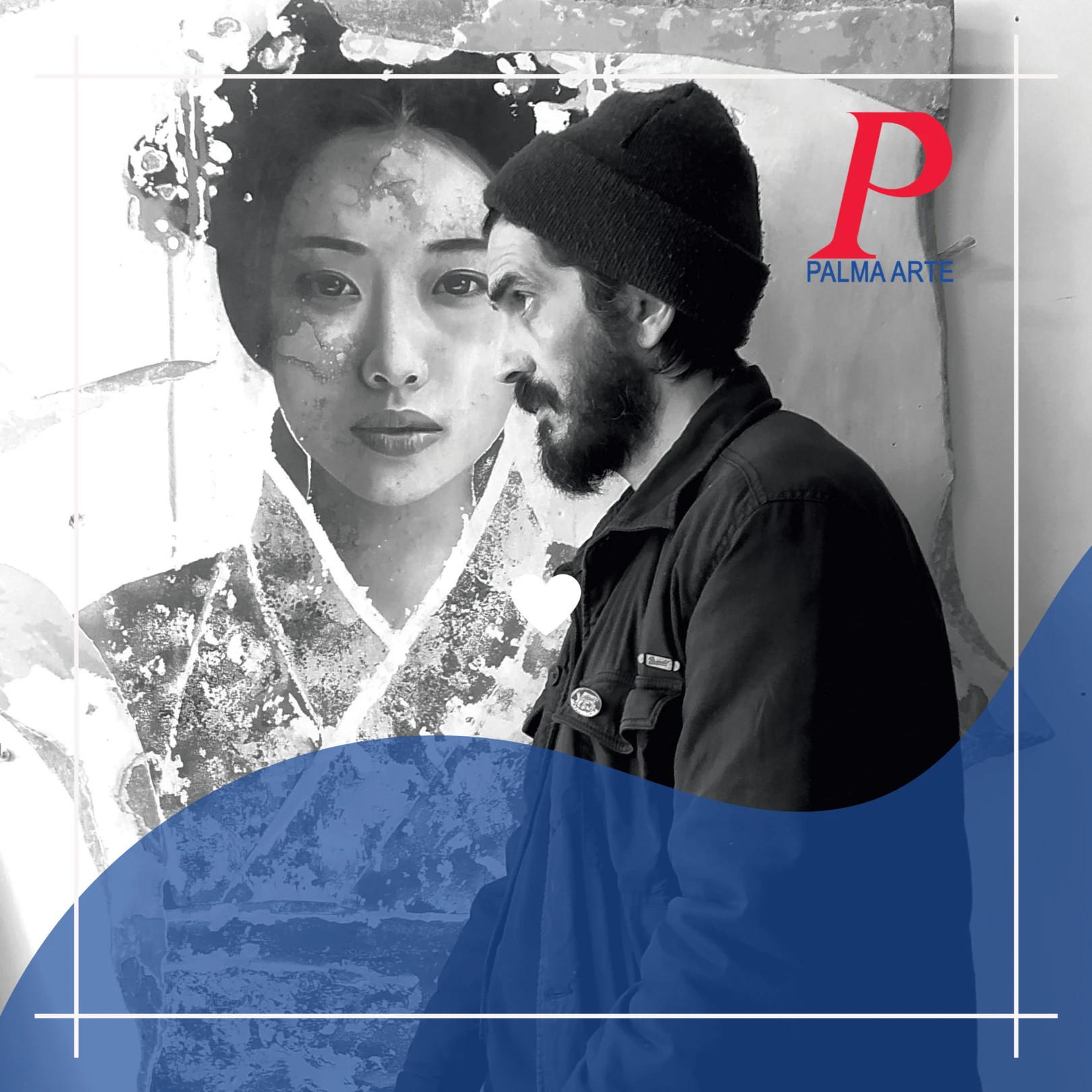Toni Alfano: the inaccessible fire

Toni Alfano's painting enchants the viewer. There is not much to add. We interviewed the artist to delve into the deeper message of his works and discover the suggestions that influence his poetics.
Memory and Identity are among the leitmotifs of your latest production. The most evident stylistic evolution, however, relates to the choice of subjects and the use of colour. In the 'Sonatine' series, these macro-themes - always also traceable to a cultural dimension - are juxtaposed in an extraordinary way with Geishas. In short, subjects with a flavour of the Orient and a technique, Descialbo, rooted in the highest Italian artistic tradition. The end result is anything but oxymoronic, rather an extraordinary synthesis of opposites. Can you explain this choice?
Although I embrace the art market with total conviction, mine remains a research painting, which has a precise purpose: to give the measure of beauty the widest possible value. Including and transcending dualities such as life/death, good/evil, creation/destruction, allows us to grasp beauty not only in its fixed form, but in its dynamic presence.
The viewer is attracted by the seductive beauty of the Geisha and only later notices the splits, which in my opinion are the true subject of the painting. I choose an aesthetic painting and at the same time a painting of action, I try to stage the tension that, for example, artists in the 1950s might have felt between formal and informal, between figure and action.
Memory defines identity, I have learnt this from working with people with Alzheimer's syndrome and observing my son: when around the age of two/three you acquire permanent memories you define yourself as "I am"; when these memories fade away "who am I?".
Beauty is an immanent form, cast within a transcendent dimension, which is that of life, of changes, of the succession of lives, after lives, days after days. I believe that when a form of beauty is born, it then becomes fixed in a dimension of eternity and is no longer subject to decay. I think painting does just that: fixes a changing form forever.
To be born, to grow, to die - all in a single instant.
Creation, preservation and destruction are fundamental principles of Reality. There are many references to these ancestral forces within the most ancient oriental philosophies, in Jungian psychoanalysis and in quantum physics theories. They are disruptive energies that have a preponderant dimension in your production. Could you summarise the universe of symbols and suggestions that have influenced you?
Apart from the great debt I owe to the philosophies and theories you mentioned in your question, I can say that the summa of all my influences can be found in a beautiful old Greek song
TA MATOKLADA SOU LAMPOUN by Markos Vamvakaris:
Your eyelashes are glowing
like countryside's flowers
like countryside's flowers
Your eyelashes are glowing
Your eyes my sister
break my heart
they break my heart
your eyes sister
You're tipping your eyelashes
and you take my mind and my thought
You take my mind and my thought
You're tipping your eyelashes
Even if you look around
you won't find another like me
You won't find another like me
Even if you look around
I am a worshipper of the present moment and the melancholy that arises from the human inability to fully experience it. I believe that understanding the present is ultimately the key to understanding the mystery that surrounds us.
Returning to Descialbo, the technique you use is like the objective correlative of the Essence to which you trace your poetics - Memory - which, like the medium used to create your works, is layered....
The execution technique that an artist chooses to use is part of the work itself and categorically has an emotional and symbolic value. Every tool, ideological or practical, defines us. So choosing oil, charcoal, marble, byte, is absolutely an objective correlative, as you wisely captured.
Only on the surface is memory exclusively about the subjectivity of the individual. When it becomes a narrative, it ceases to be a purely private act and is consigned to the public dimension, becoming subject to multiple interpretations. The comparison with the work of art is inevitable. Go with the stream of consciousness.
I know that what I do is as Giordano Bruno said, 'inaccesible fire', or energy that potentially belongs to everyone. Any kind of narrative, role or identification is necessary as a means that allows us to move and in moving we permanently change. We acquire and lose pieces of identity because identity is subject to decay, it is in its nature a tool. Whereas the dynamic that governs this is immortal, perpetual.
Acquiring memory allows us to define identity, and letting it all fade away eventually gives value to the process, a value of uniqueness and unrepeatability and delivers that value beyond the time and space within which the process itself took place.
I try to translate this into creating a painting and immediately placing it in a state of partial decay and timelessness. To offer the viewer the opportunity to grasp their own belonging in this process of self-transcendence.
"The moment in the arbour where the rain beat,
The moment in the draughty church at smokefall
Be remembered; involved with past and future.
Only through time time is conquered"
Burnt Norton
T. S. Eliot
